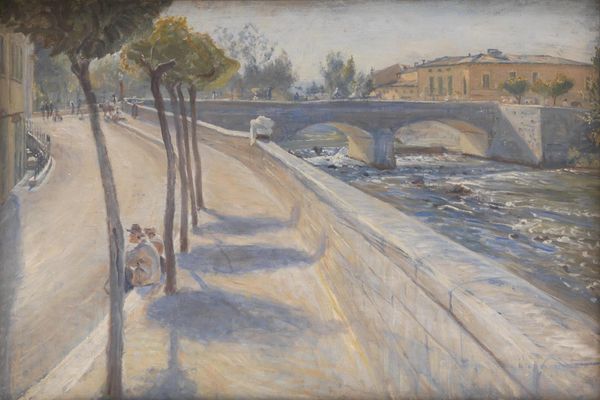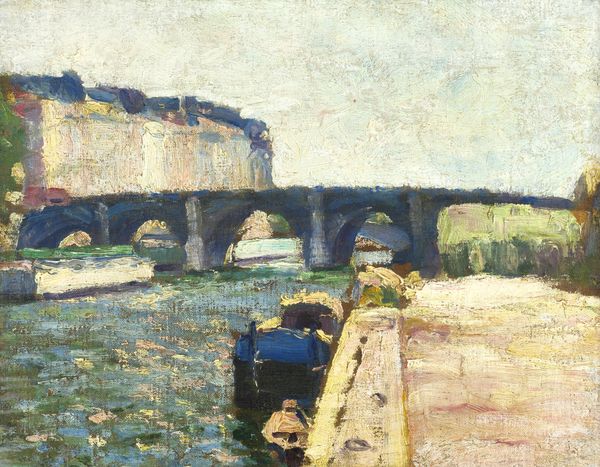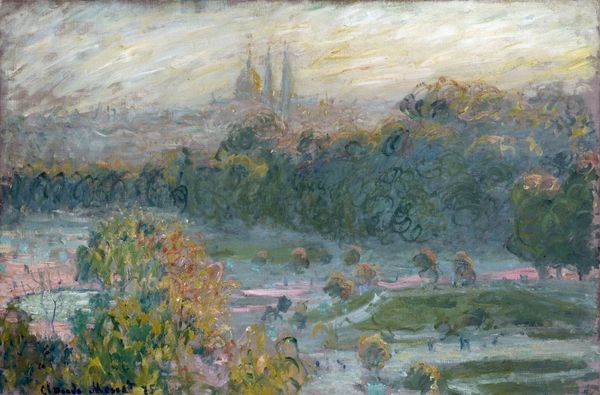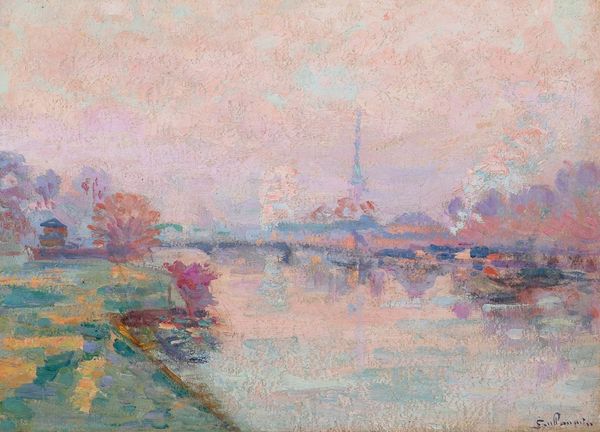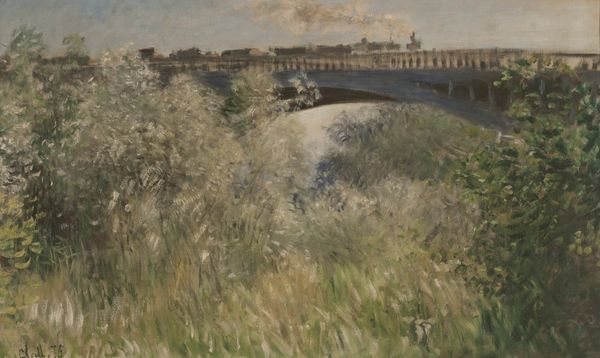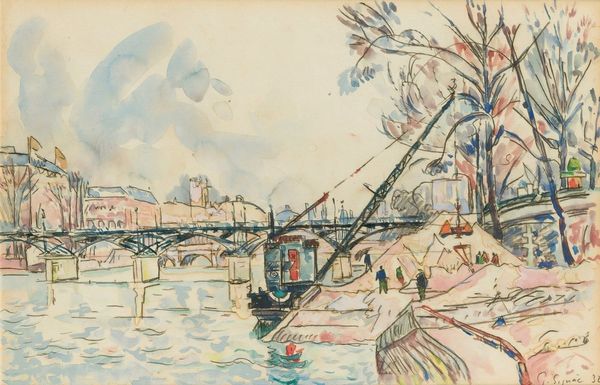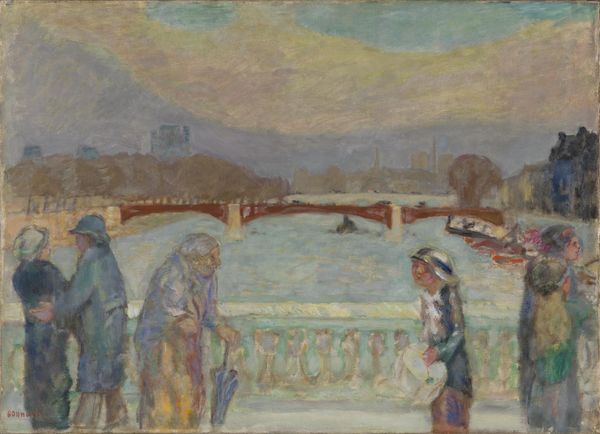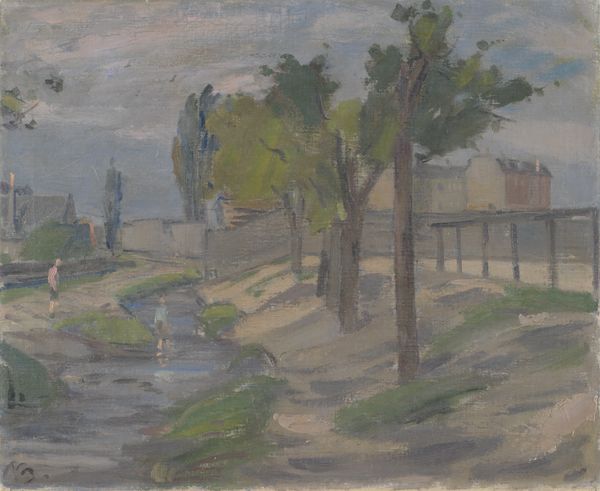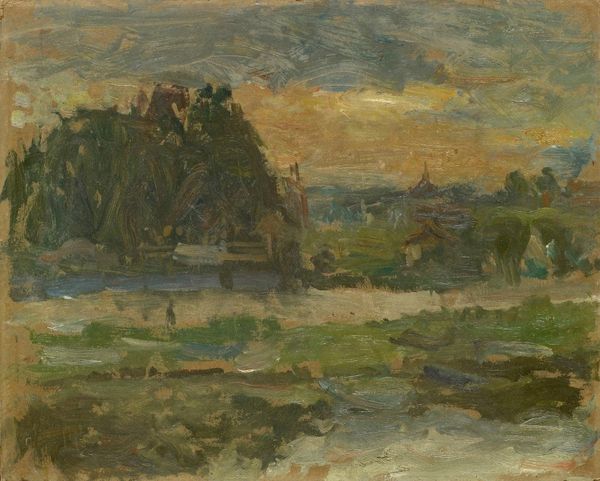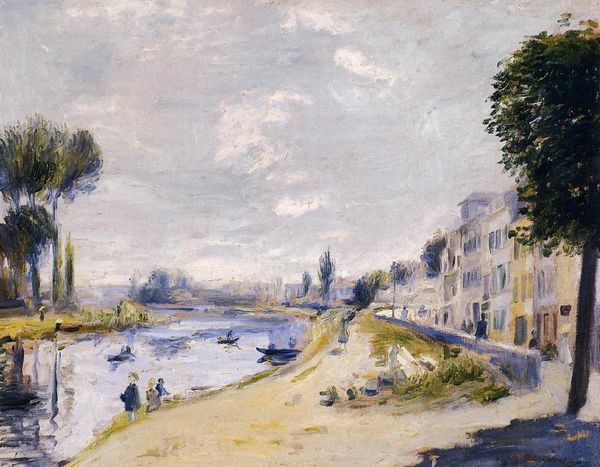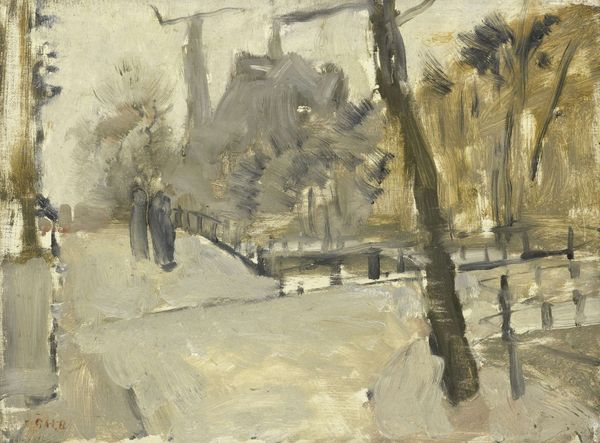
Dimensions: 46 cm (height) x 55 cm (width) (Netto)
Editor: We’re looking at Julius Paulsen's "Under the Pont des Arts, Paris. Noon" from 1910. It’s an oil on canvas, a lovely impressionistic cityscape. There’s something so tranquil about it. The brushstrokes are loose, the colors muted... what stands out to you? Curator: What strikes me is how this cityscape is framed, almost consumed by the Pont des Arts itself. We aren't given a picturesque, postcard view of Paris. Instead, Paulsen situates us *within* the city's infrastructure. Considering this was painted in 1910, it really makes me think about the urban experience at that time, the role of these rapidly developing bridges. How did artists represent the changing city? Editor: That's a great point! So, rather than romanticizing Paris, he’s engaging with its modernity, it makes me wonder if it also questions the social impact of industrialization on art's place? Curator: Exactly! And note the "plein-air" approach – painting outdoors, capturing a fleeting moment. It reflects the impressionist ideals, and places painting, and by extension the artist, at the intersection of everyday urban life. Can art provide clarity on these experiences? Is the city "a place" to the individual, or a liminal zone between locations? How would you see its public reception? Editor: It's fascinating how placing the bridge in the foreground transforms the familiar Parisian skyline into something almost incidental. And it makes you wonder, wouldn’t the average gallery patron in Copenhagen at that time find something unusual, disquieting almost, in the focus on something so practical, so industrial, like a bridge rather than just iconic monuments of Paris. Curator: Precisely! And it highlights how the role of art museums, like the SMK where this is housed, has shaped the perception and understanding of modern life itself. This makes us revisit the expectations around landscape and representation that came before it. I appreciate that there's less idealism at play. It's exciting to consider art and socio-economic change, at the intersection of art, patronage and experience! Editor: Absolutely, it shifts my view entirely to consider how Paulsen has really placed this art at this crossroad.
Comments
No comments
Be the first to comment and join the conversation on the ultimate creative platform.
